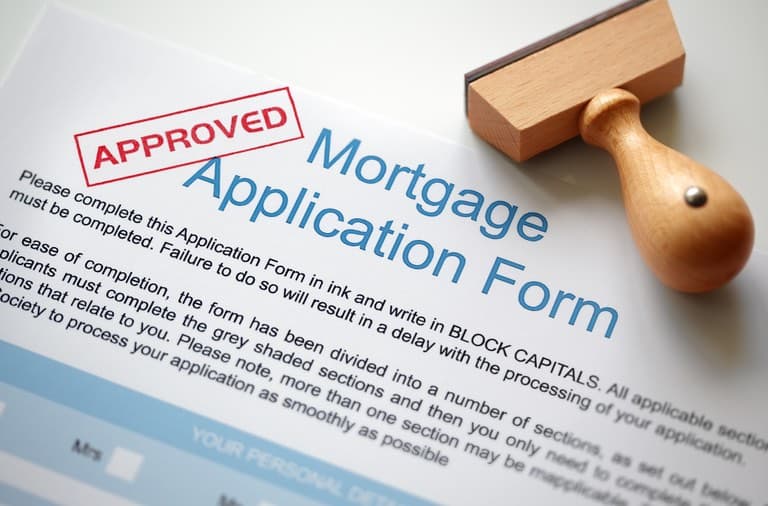Changing your existing residential mortgage to a buy-to-let mortgage can be done, but involves careful consideration of the requirements, costs and process involved. This article will explain if and how you can convert a regular mortgage to buy-to-let.
Contents
- Why Would You Want to Switch Your Mortgage to Buy to Let?
- Can You Change a Regular Mortgage to Buy to Let?
- What Does the Process Involve?
- What Are the Requirements for Buy-to-Let Mortgages?
- What Are the Costs and Tax Implications?
- How Can a Mortgage Broker Help?
- Key Steps for Changing Your Mortgage
- Conclusion – Consider Carefully But Can Be Done
- FAQ’s
- Q: What is a residential mortgage?
- Q: What is consent to let?
- Q: What is a buy-to-let mortgage?
- Q: How can I switch from a residential mortgage to a buy-to-let mortgage?
- Q: Can I change my mortgage from residential to buy-to-let?
- Q: How do I buy another property and switch to a buy-to-let mortgage?
- Q: Can I change my current mortgage provider to get a buy-to-let mortgage?
- Q: Is it possible to convert a residential mortgage to a buy-to-let mortgage?
- Q: Can I have two mortgages if I want to switch to a buy-to-let mortgage?
- Q: Are buy-to-let mortgages regulated?
Why Would You Want to Switch Your Mortgage to Buy to Let?
There are a few key reasons you may want to change your current mortgage on your residential property to a buy-to-let mortgage:
- You want to let the property but your existing mortgage doesn’t allow this. Switching to a buy to let mortgage would enable you to legally let your property.
- You can get a better interest rate or mortgage deal with a buy-to-let lender. The buy-to-let mortgage market is competitive.
- Your circumstances have changed and you need to let the property, e.g. you’ve inherited a property, want to relocate for work or need rental income.
- You want to purchase another property to let but can only get a buy-to-let mortgage to fund it. Switching your current residential mortgage would release funds.
These are just some of the common reasons why someone may look at changing a mortgage to buy to let.
Can You Change a Regular Mortgage to Buy to Let?
The simple answer is yes, it is sometimes possible to change your existing residential mortgage to a buy-to-let mortgage with the consent of your lender. However, not all lenders will allow this, so you’ll need to speak to your mortgage provider.
The key considerations are:
- Does your current mortgage deal or provider allow letting? Check your original mortgage agreement. Breaching this could put you in default.
- Have you lived in the property for at least six months? Most lenders require this.
- Will your lender consent to change the mortgage type and their terms? This usually incurs a fee.
- Do you meet affordability criteria based on projected rental income? Much stricter for buy-to-let.
As long as you meet the lender’s specific conditions, there is a good chance they will agree to convert your mortgage. But you must seek consent first.

What Does the Process Involve?
If your lender agrees, the process involves:
- Applying for consent to let – You’ll pay a fee and agree to new terms.
- Obtaining consent – The lender will assess affordability and provide written consent. This can take 1-2 months.
- Switching the mortgage product – Your residential mortgage will be closed and a new buy-to-let mortgage opened. Early repayment charges may apply if still in your fixed period with the current lender.
- Providing tenancy agreements – Most lenders will require you to have a tenant lined up and a tenancy agreement in place at the time of the switch.
- Paying arrangement/valuation fees – Expect to pay £100-£200 for the new mortgage arrangement and a valuation fee.
So while possible, it does require considerable time, paperwork and lender coordination to change an existing mortgage to buy-to-let. Professional advice is highly recommended.
What Are the Requirements for Buy-to-Let Mortgages?
Buy-to-let mortgage requirements are stricter than residential mortgages. Key differences include:
- Large deposit – Expect to need at least a 25% deposit for a buy-to-let mortgage. Some lenders may consider 15-20%.
- Affordability test – Proof the rental income can cover the mortgage payments and other costs by 125% to 145%.
Meeting the stricter buy-to-let requirements is key to getting lender consent for changing your mortgage.
What Are the Costs and Tax Implications?
As well as the requirements, be aware of the costs:
- Mortgage arrangement fees – Expect around £1,500+ to set up a new buy-to-let remortgage.
- Consent to let fees – Lenders typically charge £100-£200 for consent to switch the mortgage type.
- Early repayment charges – If still in your deal period, ERCs of £1,000+ may apply to exit your residential mortgage.
- Legal fees – You may need a solicitor to transfer property ownership to a Limited Company (£500-£1,000) and pay Stamp Duty.
- Valuation fees – A lender valuation report will cost around £200-£300.
- Mortgage Arrangement Fees – These can cost between £1,000-£2,000.
- Higher interest rates – Buy-to-let mortgage rates can be 0.5% or more higher.
There are also tax implications of switching your property to buy-to-let:
- You’ll pay income tax on rental profits after allowable expenses.
- Mortgage interest will only be partly allowable for tax relief.
- You may have to pay stamp duty if the property is transferred to a Limited Company.
- Capital gains tax may apply in future if you sell the property.
So do factor in these potential costs and tax implications when deciding whether to change to a buy-to-let mortgage.

How Can a Mortgage Broker Help?
Given the complexities of switching your residential mortgage to buy-to-let, it is advisable to speak with a specialist buy-to-let mortgage broker. Their expertise can help:
- Assess if your existing lender will consent to change the mortgage type.
- Identify suitable buy-to-let mortgage lenders and products you can switch to.
- Guide you through the affordability and application process.
- Coordinate with solicitors on property ownership transfer if needed.
- Avoid pitfalls that could cause the buy-to-let mortgage application to be declined.
- Secure more preferential buy-to-let mortgage rates than going direct.
- Ensure all paperwork and evidence meet the lender’s requirements.
This can smooth the process and give you confidence your buy-to-let mortgage application will be successful. Brokers have extensive knowledge of individual lender policies.
I can personally recommend L&C Mortgages. I have used them several times and will continue to do so.
Key Steps for Changing Your Mortgage
If you’ve decided switching your mortgage is the right move, follow these key steps:
- Contact your existing lender and ask if they will allow your mortgage to be changed to buy-to-let.
- If yes, discuss their requirements e.g. on minimum ownership period, property type, and affordability.
- If the existing lender says no, don’t worry. Speak to a broker about taking a new buy-to-let mortgage with another provider.
- Ask a buy-to-let broker to assess your situation and recommend options.
- Get your buy-to-let mortgage agreed upon first before finding tenants.
- Submit all necessary paperwork such as income evidence and IDs etc.
- Pay valuation and arrangement fees to the new lender if a new mortgage.
- Complete your new buy-to-let mortgage and switch products.
Related Articles
What Is A Let To Buy Mortgage?
What Is A Consumer Buy To Let Mortgage?
Conclusion – Consider Carefully But Can Be Done
While changing your residential mortgage to buy-to-let isn’t always straightforward, it is possible in many cases as long as the lender consents. This allows you to release funds or start letting your existing property.
The process requires meeting stricter criteria and costs but can work out well with proper planning. We strongly recommend engaging an expert buy-to-let mortgage broker. They will guide you through the changeover while ensuring everything meets the lender’s requirements.
Key Points to Remember:
- Check if your existing lender will consent to a change to buy-to-let
- You’ll need to meet affordability rules and have a suitable property
- Be aware of costs like arrangement fees and early repayment charges
- Using a specialist broker can smooth the process considerably
- Get consent first before telling any potential tenants
- Make sure to provide all necessary paperwork and evidence
So while not completely straightforward, with the right approach changing to a buy-to-let mortgage can enable you to release funds or generate rental income from your current residential property.
FAQ’s
Q: What is a residential mortgage?
A: A residential mortgage is a loan secured against a property that is used as a primary residence.
Q: What is consent to let?
A: Consent to let is the permission granted by your mortgage lender to let out your residential property instead of living in it yourself.
Q: What is a buy-to-let mortgage?
A: A buy-to-let mortgage is a loan specifically designed for purchasing a property with the intention of letting it out to tenants.
Q: How can I switch from a residential mortgage to a buy-to-let mortgage?
A: To switch from a residential mortgage to a buy-to-let mortgage, you need to contact your current mortgage provider or speak to a buy-to-let mortgage broker.
Q: Can I change my mortgage from residential to buy-to-let?
A: Yes, it is possible to change your mortgage from a residential one to a buy-to-let mortgage. However, you will need to meet the requirements set by your mortgage lender.
Q: How do I buy another property and switch to a buy-to-let mortgage?
A: To buy another property and switch to a buy-to-let mortgage, you should consult a buy-to-let mortgage broker who can guide you through the process and help you find the best mortgage options.
Q: Can I change my current mortgage provider to get a buy-to-let mortgage?
A: Yes, you can change your current mortgage provider and switch to a buy-to-let mortgage with a different lender. It is recommended to work with mortgage brokers who are experts in buy-to-let mortgages to find the most suitable options for you.
Q: Is it possible to convert a residential mortgage to a buy-to-let mortgage?
A: Yes, it is possible to convert a residential mortgage to a buy-to-let mortgage. However, this process may involve additional fees and changes in the terms of your mortgage. So it’s important to consult with your mortgage lender or a specialist mortgage advisor.
Q: Can I have two mortgages if I want to switch to a buy-to-let mortgage?
A: Yes, it is possible to have two mortgages if you want to switch to a buy-to-let mortgage. You will have your existing residential mortgage and a new buy-to-let mortgage for the property you intend to let out.
Q: Are buy-to-let mortgages regulated?
A: Buy-to-let mortgages are not regulated by the Financial Conduct Authority (FCA) unless you are acting as a consumer rather than a business entity.

